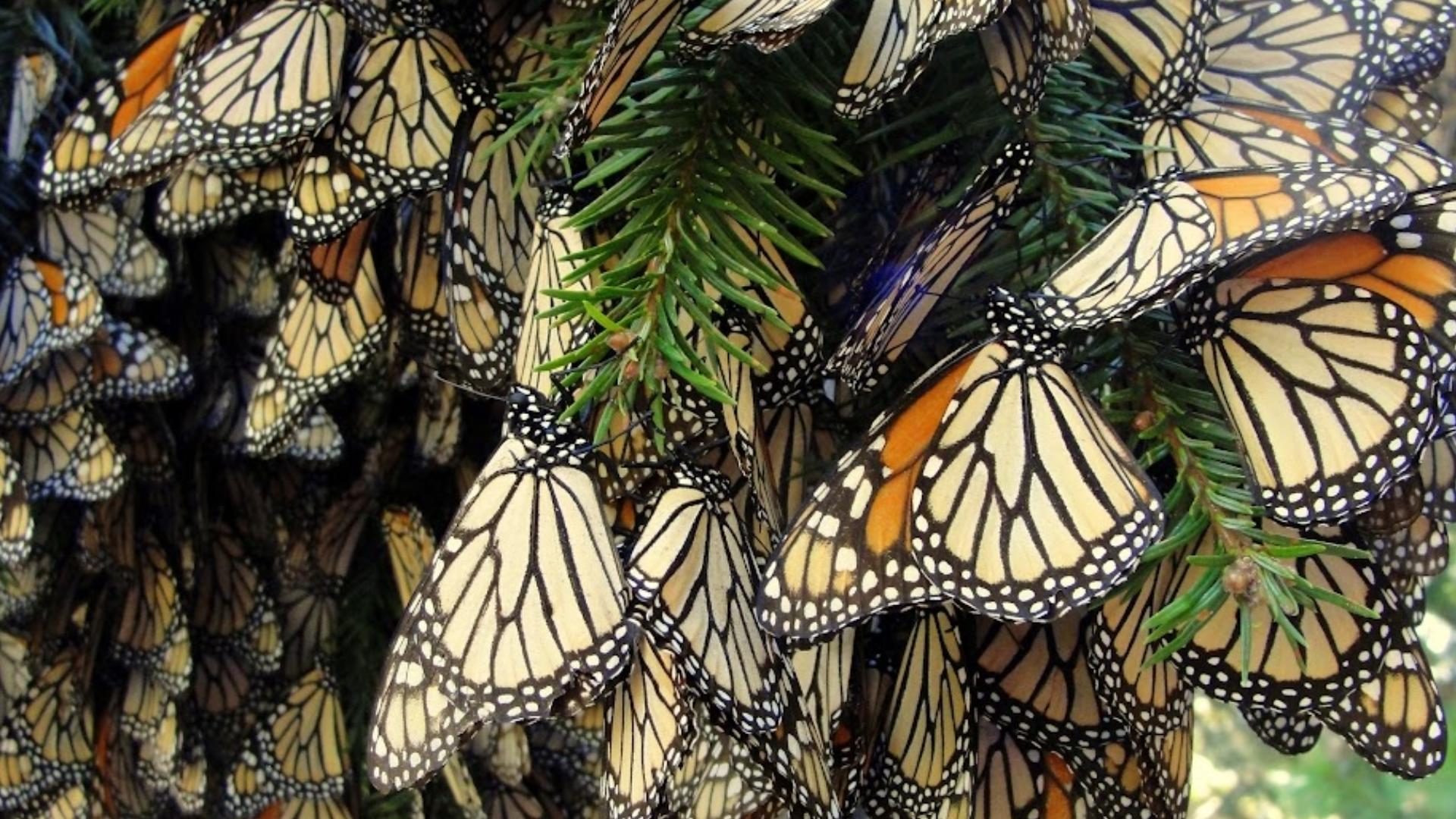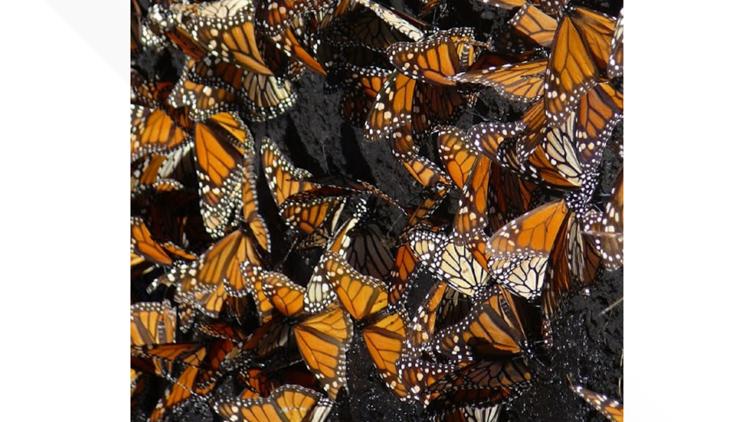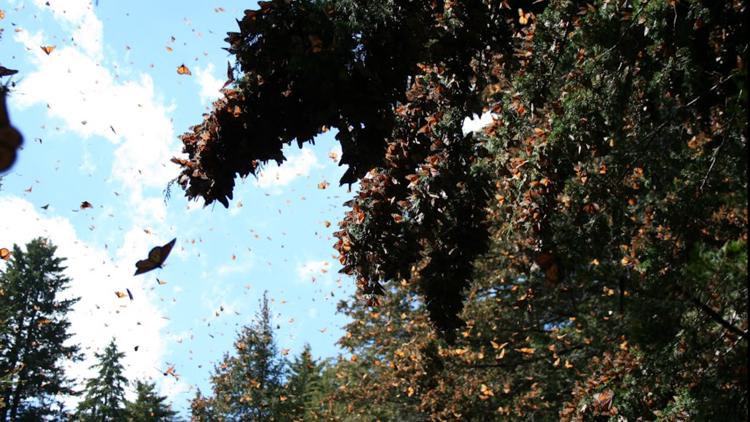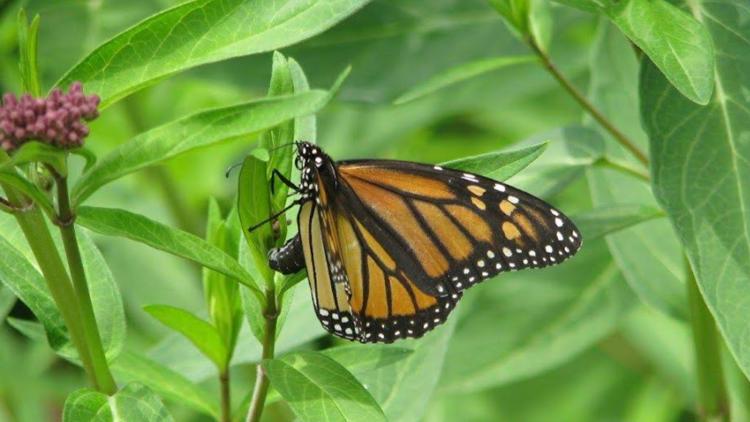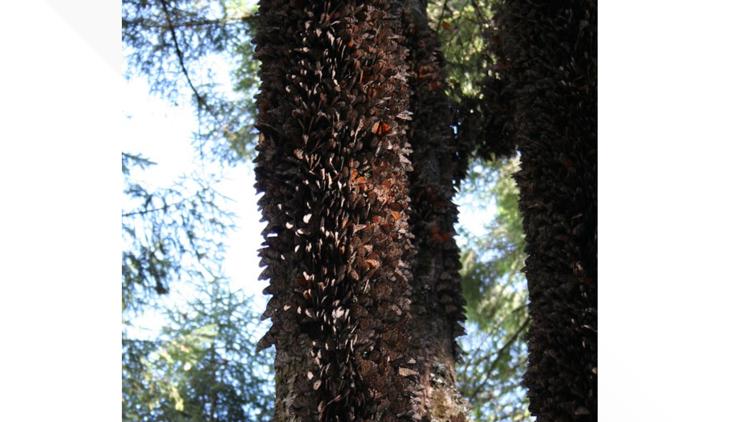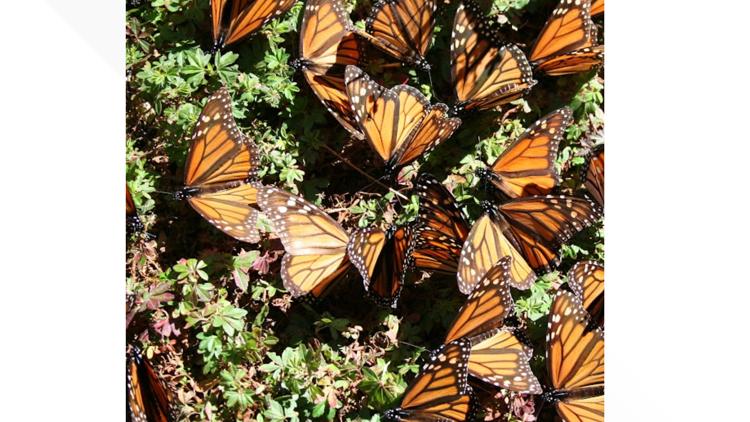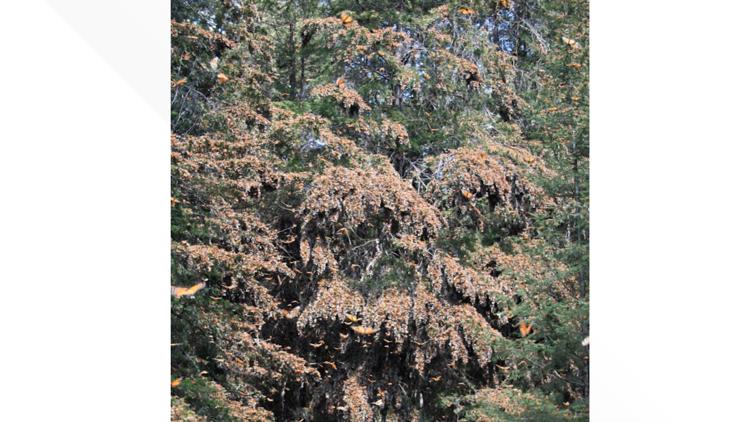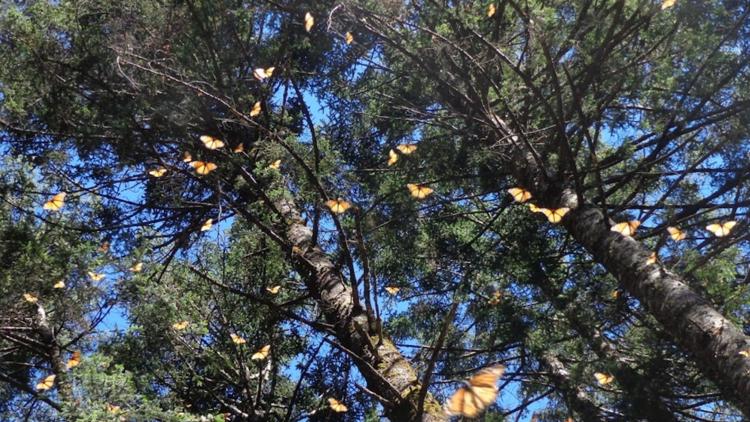Sharp decline in monarch butterfly population alarms scientists and advocates | How to help
People who love monarch butterflies say there needs to be immediate action to save the species.

An alarming drop in the monarch butterfly population could impact everyone across the Peach State, scientists say.
Insects pollinate 80% of the food people eat and dramatic dips in their population could severely disrupt the food supply, data shows. Scientists said Georgia is vital in protecting the monarch butterflies across the United States as their numbers continue to fall.
"The sight of the orange butterfly wings flying, almost like confetti. It's just constant movement," described University of Georgia Ecology Professor Sonia Altizer.
Altizer started Project Monarch Health in 2006, a community science project that tracks parasites in monarch butterflies.
She paints a picture of what can be done to preserve their existence in the Peach State.
Photos | Monarch butterflies in Mexico
The decline
Over time, research shows the decline of monarch butterflies becoming more evident.
In the 1990s, nearly 700 million monarchs migrated from the United States and Canada to Mexico, and more than one million butterflies overwintered in Mexico City, according to the nonprofit Xerces Society.
Now, researchers and scientists estimate only a part of the monarch butterfly population remains. Since the 1980s, the western monarch butterfly population has declined by more than 90%, and the eastern monarch population has declined by 80%, according to the nonprofit Environment America.
A recent butterfly census shows there are nearly 100,000 fewer butterflies in Western overwintering grounds, which is a decline of nearly 30% from 2022, Environment America's report stated.
In 2022, the International Union for the Conservation of Nature added the migrating monarch butterfly to its red list of threatened species, which is categorized as "endangered."
Why the decline of monarch butterflies?
So, why the decline?
Scientists believe there are a few contributing factors: climate change, herbicide-resistant crops, pesticide use, the use of non-native milkweed and logging and development, which has diminished monarchs' overwintering sites.
Move your cursor over the interactive graphic below.
'A web of life'
The web of life is woven around every living thing, connecting every creature in its creation.
"Monarchs are part of an interconnected community or a web of life," Altizer said.
"It was so spectacular. It simply changed my life," said Susan Meyers, a volunteer with Monarchs Across Georgia, a conservation group working to protect the butterflies.
For Meyers, one wonder flies above the rest.
"When I look at a monarch, I see beauty, but also fascination," she said.
That fascination turns to frustration as the population of monarch butterflies plummets 60% this year from the previous year, according to a report from the Center for Biological Diversity.
"When you see how few trees have monarchs on them, it's heartbreaking," she said.
Meyers advocates across the state and in her own garden, where she plants native milkweed to support migration.
"It's very depressing. It just makes you want to come back home and do something," Meyers added.
Slide the line in the interactive graphic below to watch a butterfly's growth.
Monarch migration
Altizer follows monarchs on their migration from Canada across the U.S. to the mountaintops of Mexico – nearly 3,000 miles, across all different climates.
"They migrate the longest, two ways, of any insect species in the world," she said.
Altizer has traveled to their overwintering home in Mexico.
"The color, and the sound, and the sights, constant movement, and just to be surrounded by so much life. It's so amazing. It's a life-changing experience," she said.
But she says climate change, the use of herbicides that kill milkweed, and now disease are drastically slowing the migration.
"It could be on the order of 50 million monarchs that aren't migrating successfully now because they're infected with this protozoan," she said.
She studies the protozoan parasite attacking monarchs in her lab.
The parasite is passed from adult butterflies to caterpillars, causing millions of spores that cripple monarchs' wings.
"If you think about us, we wouldn't want to run a marathon with the flu; we wouldn't do very well. So, it's the same for these butterflies," she said.
The professor also wants to know when you see a butterfly. Part of their conservation effort is tracking monarchs as they migrate across the U.S.
The map below shows the reported sightings of monarch butterflies so far in 2024, according to Journey North, so you can get an idea of their migration patterns from the U.S. to Mexico. To report a sighting, click here.
How to help
Researchers are seeking answers to protect monarchs and the web of life.
"If insects were to disappear, people would also likely disappear because we depend on them in so many ways," Altizer said.
She added the food chain would collapse without insects, and butterflies are vital to the human life cycle.
We are all connected and we can all help.
"I have to have hope and I believe that these are resilient little animals, and they can bounce back, if we give them a chance. We can figure this out and we can fix this," she said. "What we do here in Georgia will be so important to protect monarchs all over."
Here are just a few ways on how you can help:
Plant native milkweed and nectar plants
Altizer says the easiest way to get involved is to plant native milkweed, which will give the monarchs a place to rest.
According to Environment America, a research and policy nonprofit, milkweed is vital for the monarch butterfly's life cycle. It's the only plant monarch caterpillars eat.
However, researchers say you can't just plant any type of milkweed - it must be native to the area. To learn more about which type of milkweed to plant, click here.
Once the caterpillar is fully grown into a butterfly, scientists say to be sure to plant an assortment of flowers that will bloom and provide nectar for them. See the guide below for which nectar plants are best in the southeast:
Volunteer and support conservation efforts
Habitat loss is one of the primary reasons for the decline in monarch butterflies.
Volunteer to help restore habitats across the Peach State by partnering with organizations such as Monarch Across Georgia.
To learn more about how to volunteer, click here. You can also learn more about conservation efforts online here.


